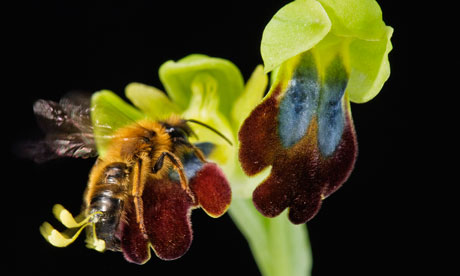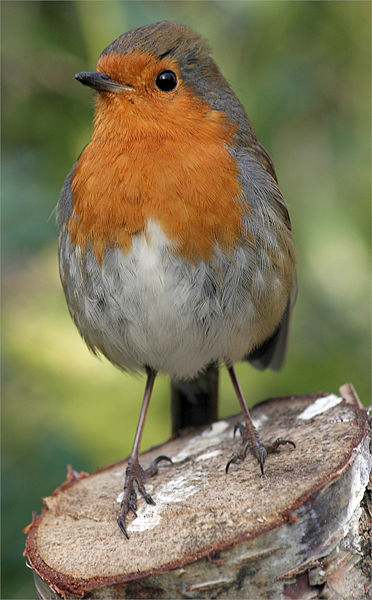 Bird brainiacs: The genius of pigeons - life - 04 May 2014 - New Scientist
Bird brainiacs: The genius of pigeons - life - 04 May 2014 - New Scientist
More evidence emerged earlier this month that humans are far from unique in certain attributes that creationists like to present as uniquely human, God-given attributes such as intelligence, self-awareness, consciousness and inductive reasoning ability. Not only do we know that several apes and monkeys have these abilities but now feral pigeon,
Columba livia, can be added to the list.
Feral or town pigeons are the descendants of pigeons which were first domesticated by Man about 5000 years ago from wild rock doves, which tend to inhabit rocky areas. The wild rock dove is now quite rare in many parts of its range. In the UK it is now restricted to north and West Scotland, some offshore islands and the coast of Northern Ireland. I have only ever seen two pairs; one in Oman, almost certainly the
C. l. palaestinae subspecies, and one in the Tunisian Atlas Mountains. The feral form has adapted to living alongside humans for which it needed to be both flexible and opportunistic, both implying intelligence and the ability to learn. Similar attributes can be seen in rats, dogs and cats, for example. The variations in colour and markings to be seen in the feral form are almost certainly the result of human selective breeding.
Of course, ever since the famous psychologist
B.F.Skinner showed with his operant conditioning experiments, we have known that pigeons will develop religion when 'rewards' become dissociated from actions. Like religious humans, operantly conditioned pigeons perform rituals apparently in the belief that they influence the outcome of what is actually a randomised and unpredictable system, just as humans sing, say prayers and adopt ritual body postures thinking they are influencing the future.
Now it seems that this is due to a limited form of simple reasoning ability which probably includes both self-awareness and the ability to 'philosophise', i.e to think about thinking and to be aware of their own knowledge - I'm talking about pigeons here, not religious humans, by the way.
For example,
Mike Columbo of Otago University, New Zealand, has shown the pigeons can memorise more than 100 images and recall them more than two years later. He also showed that they can handle numbers and subtle relationships between them. For example, pigeons trained to peck at a series of images of ascending numbers of object, when given a series of images with larger numbers of objects up to nine, still pecked them in ascending order.
They can also apply deductive reasoning logic such as working out that if person B is taller than person A and person C is taller than person B then person C is taller than person A. They can do this with up to five people. This was a logic puzzle upon which Aristotle mused.
Some researchers have also shown that they can recognise the style of different artists and distinguish a Monet from a Picasso. They can also distinguish between major styles of art such as cubism and impressionism.
In another experiment, pigeons were fed by two very similar people in terms of skin and hair colour, height and age but wearing different coloured coats. One person simply fed them whilst the other chased them. The pigeons quickly learned to tell the 'hostile' person from the neutral one. They even recognised the right person when they swapped coats.
Abstract
Considered as plague in many cities, pigeons in urban areas live close to human activities and exploit this proximity to find food which is often directly delivered by people. In this study, we explored the capacity of feral pigeons to take advantage of this human-based food resource and discriminate between friendly and hostile people. Our study was conducted in an urban park. Pigeons were fed by two experimenters of approximately the same age and skin colour but wearing coats of different colours. During the training sessions, the two human feeders displayed different attitudes: one of the feeders was neutral and the second was hostile and chased away the pigeons. During the two test phases subsequent to the training phase, both feeders became neutral. Two experiments were conducted, one with one male and one female feeder and the second with two female feeders. In both experiments, the pigeons learned to quickly (six to nine sessions) discriminate between the feeders and maintained this discrimination during the test phases. The pigeons avoided the hostile feeder even when the two feeders exchanged their coats, suggesting that they used stable individual characteristics to differentiate between the experimenter feeders. Thus, pigeons are able to learn quickly from their interactions with human feeders and use this knowledge to maximize the profitability of the urban environment. This study provides the first experimental evidence in feral pigeons for this level of human discrimination.
© Springer-Verlag 2011
Other experiments have shown that pigeons can plan ahead, are aware of their own knowledge, and can recognise themselves in a video.
Abstract
The ability to recognize self has been known to be limited to some animal species, but previous research has focused almost exclusively on the animal's reaction to a mirror. Recent studies suggest that the temporal contingency between a subject's action and the corresponding visual scene reflected in a mirror plays an important role in self-recognition. To assess the roles of visual-proprioceptive contiguity in self-recognition, we explored whether pigeons are able to discriminate videos of themselves with various temporal properties. We trained five pigeons to respond to live video images of themselves (live self-movies) and not to video filmed during previous training sessions (pre-recorded self-movies). Pigeons learned to peck trial-unique live self-movies more frequently than pre-recorded self-movies. We conducted two generalization tests after pigeons learned to discriminate between the two conditions. First, discrimination acquired during training sessions was transferred to a test session involving live self-movies and new pre-recorded self-movies. Second, the same pigeons were tested in extinction procedure using delayed live self-movies and new pre-recorded self-movies. Although pigeons responded to delayed presentations of live self-movies more frequently than to new pre-recorded self-movies, the relative response rate to delayed presentation of live self-movies gradually decreased as the temporal discrepancy between pigeons' own behavior and the corresponding video increased. These results indicate that pigeons' discrimination of self-movies with various temporal properties was based on the temporal contiguity between their behavior and its visual feedback. The methodology used in the present experiment is an important step toward improving the experimental analysis of self-recognition in non-human animals.
The interesting thing is that bird intelligence, which has also been demonstrated in the crow and parrot families, seems to have evolved independently from mammalian intelligence and involves different parts of the brain, although the neurons involved seem to be very similar, as though there is only the one solution to the 'problem' of evolving intelligence at the cell level. Nevertheless, and to further embarrass the proponents of the intelligent design hoax, nature appears to have 'invented the wheel' at least twice so far as evolving intelligence is concerned.
It would be interesting to see how cephalopods (octopuses and squids) fare in intelligence tests and how that has evolved, because, with their known to be intelligent behaviour and ability to plan and their very different nervous systems, one thing we can be sure about is that nature has invented the wheel yet again with these molluscs.
'via Blog this'

 Reassessing Those Rattlers | Research Frontiers.
Reassessing Those Rattlers | Research Frontiers.















